Alexandre Bernardino
Frame-Level Real-Time Assessment of Stroke Rehabilitation Exercises from Video-Level Labeled Data: Task-Specific vs. Foundation Models
Jun 04, 2025Abstract:The growing demands of stroke rehabilitation have increased the need for solutions to support autonomous exercising. Virtual coaches can provide real-time exercise feedback from video data, helping patients improve motor function and keep engagement. However, training real-time motion analysis systems demands frame-level annotations, which are time-consuming and costly to obtain. In this work, we present a framework that learns to classify individual frames from video-level annotations for real-time assessment of compensatory motions in rehabilitation exercises. We use a gradient-based technique and a pseudo-label selection method to create frame-level pseudo-labels for training a frame-level classifier. We leverage pre-trained task-specific models - Action Transformer, SkateFormer - and a foundation model - MOMENT - for pseudo-label generation, aiming to improve generalization to new patients. To validate the approach, we use the \textit{SERE} dataset with 18 post-stroke patients performing five rehabilitation exercises annotated on compensatory motions. MOMENT achieves better video-level assessment results (AUC = $73\%$), outperforming the baseline LSTM (AUC = $58\%$). The Action Transformer, with the Integrated Gradient technique, leads to better outcomes (AUC = $72\%$) for frame-level assessment, outperforming the baseline trained with ground truth frame-level labeling (AUC = $69\%$). We show that our proposed approach with pre-trained models enhances model generalization ability and facilitates the customization to new patients, reducing the demands of data labeling.
MIL vs. Aggregation: Evaluating Patient-Level Survival Prediction Strategies Using Graph-Based Learning
Mar 29, 2025Abstract:Oncologists often rely on a multitude of data, including whole-slide images (WSIs), to guide therapeutic decisions, aiming for the best patient outcome. However, predicting the prognosis of cancer patients can be a challenging task due to tumor heterogeneity and intra-patient variability, and the complexity of analyzing WSIs. These images are extremely large, containing billions of pixels, making direct processing computationally expensive and requiring specialized methods to extract relevant information. Additionally, multiple WSIs from the same patient may capture different tumor regions, some being more informative than others. This raises a fundamental question: Should we use all WSIs to characterize the patient, or should we identify the most representative slide for prognosis? Our work seeks to answer this question by performing a comparison of various strategies for predicting survival at the WSI and patient level. The former treats each WSI as an independent sample, mimicking the strategy adopted in other works, while the latter comprises methods to either aggregate the predictions of the several WSIs or automatically identify the most relevant slide using multiple-instance learning (MIL). Additionally, we evaluate different Graph Neural Networks architectures under these strategies. We conduct our experiments using the MMIST-ccRCC dataset, which comprises patients with clear cell renal cell carcinoma (ccRCC). Our results show that MIL-based selection improves accuracy, suggesting that choosing the most representative slide benefits survival prediction.
Investigating an Intelligent System to Monitor \& Explain Abnormal Activity Patterns of Older Adults
Jan 30, 2025
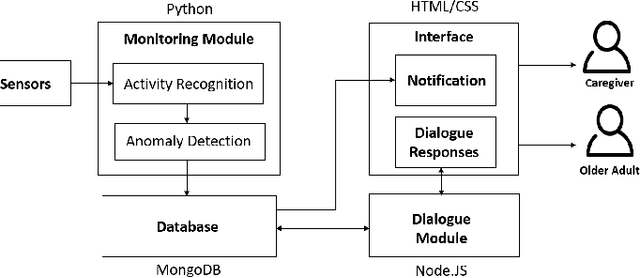

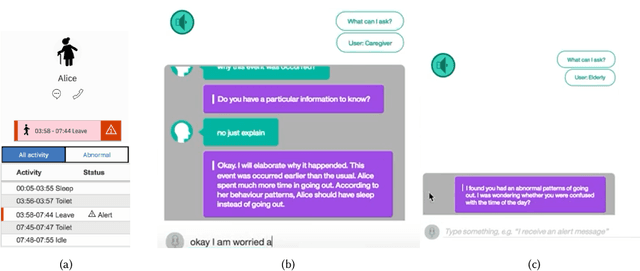
Abstract:Despite the growing potential of older adult care technologies, the adoption of these technologies remains challenging. In this work, we conducted a focus-group session with family caregivers to scope designs of the older adult care technology. We then developed a high-fidelity prototype and conducted its qualitative study with professional caregivers and older adults to understand their perspectives on the system functionalities. This system monitors abnormal activity patterns of older adults using wireless motion sensors and machine learning models and supports interactive dialogue responses to explain abnormal activity patterns of older adults to caregivers and allow older adults proactively sharing their status with caregivers for an adequate intervention. Both older adults and professional caregivers appreciated that our system can provide a faster, personalized service while proactively controlling what information is to be shared through interactive dialogue responses. We further discuss other considerations to realize older adult technology in practice.
Semantic-Based Active Perception for Humanoid Visual Tasks with Foveal Sensors
Apr 16, 2024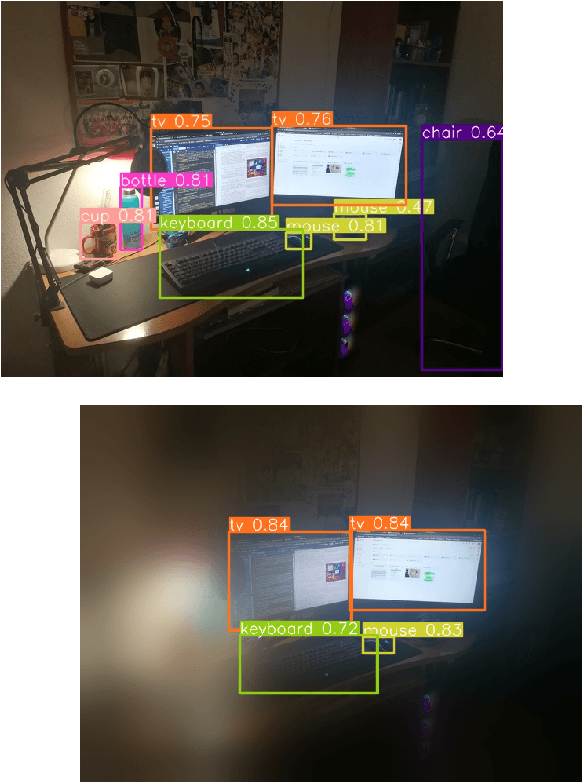
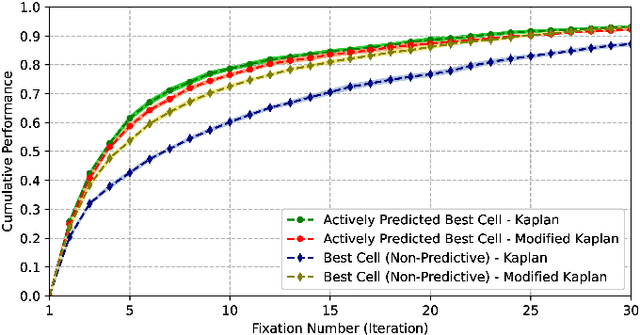
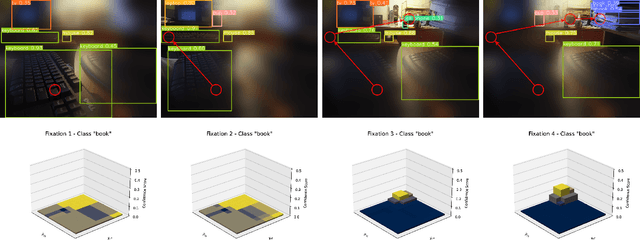
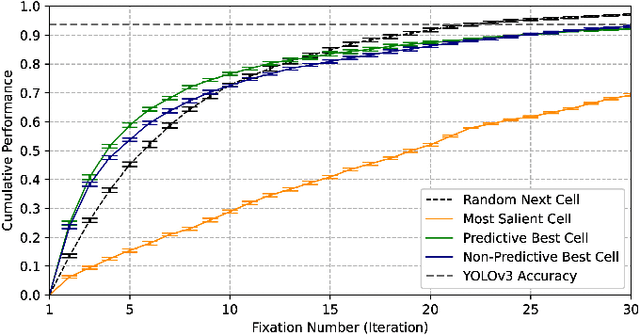
Abstract:The aim of this work is to establish how accurately a recent semantic-based foveal active perception model is able to complete visual tasks that are regularly performed by humans, namely, scene exploration and visual search. This model exploits the ability of current object detectors to localize and classify a large number of object classes and to update a semantic description of a scene across multiple fixations. It has been used previously in scene exploration tasks. In this paper, we revisit the model and extend its application to visual search tasks. To illustrate the benefits of using semantic information in scene exploration and visual search tasks, we compare its performance against traditional saliency-based models. In the task of scene exploration, the semantic-based method demonstrates superior performance compared to the traditional saliency-based model in accurately representing the semantic information present in the visual scene. In visual search experiments, searching for instances of a target class in a visual field containing multiple distractors shows superior performance compared to the saliency-driven model and a random gaze selection algorithm. Our results demonstrate that semantic information, from the top-down, influences visual exploration and search tasks significantly, suggesting a potential area of research for integrating it with traditional bottom-up cues.
Pose-free object classification from surface contact features in sequences of Robotic grasps
Mar 28, 2024Abstract:In this work, we propose two cost efficient methods for object identification, using a multi-fingered robotic hand equipped with proprioceptive sensing. Both methods are trained on known objects and rely on a limited set of features, obtained during a few grasps on an object. Contrary to most methods in the literature, our methods do not rely on the knowledge of the relative pose between object and hand, which greatly expands the domain of application. However, if that knowledge is available, we propose an additional active exploration step that reduces the overall number of grasps required for a good recognition of the object. One of the methods depends on the contact positions and normals and the other depends on the contact positions alone. We test the proposed methods in the GraspIt! simulator and show that haptic-based object classification is possible in pose-free conditions. We evaluate the parameters that produce the most accurate results and require the least number of grasps for classification.
Finding safe 3D robot grasps through efficient haptic exploration with unscented Bayesian optimization and collision penalty
Feb 10, 2024Abstract:Robust grasping is a major, and still unsolved, problem in robotics. Information about the 3D shape of an object can be obtained either from prior knowledge (e.g., accurate models of known objects or approximate models of familiar objects) or real-time sensing (e.g., partial point clouds of unknown objects) and can be used to identify good potential grasps. However, due to modeling and sensing inaccuracies, local exploration is often needed to refine such grasps and successfully apply them in the real world. The recently proposed unscented Bayesian optimization technique can make such exploration safer by selecting grasps that are robust to uncertainty in the input space (e.g., inaccuracies in the grasp execution). Extending our previous work on 2D optimization, in this paper we propose a 3D haptic exploration strategy that combines unscented Bayesian optimization with a novel collision penalty heuristic to find safe grasps in a very efficient way: while by augmenting the search-space to 3D we are able to find better grasps, the collision penalty heuristic allows us to do so without increasing the number of exploration steps.
* 2018 IEEE/RSJ International Conference on Intelligent Robots and Systems (IROS)
Gaussian Mixture Models for Affordance Learning using Bayesian Networks
Feb 08, 2024Abstract:Affordances are fundamental descriptors of relationships between actions, objects and effects. They provide the means whereby a robot can predict effects, recognize actions, select objects and plan its behavior according to desired goals. This paper approaches the problem of an embodied agent exploring the world and learning these affordances autonomously from its sensory experiences. Models exist for learning the structure and the parameters of a Bayesian Network encoding this knowledge. Although Bayesian Networks are capable of dealing with uncertainty and redundancy, previous work considered complete observability of the discrete sensory data, which may lead to hard errors in the presence of noise. In this paper we consider a probabilistic representation of the sensors by Gaussian Mixture Models (GMMs) and explicitly taking into account the probability distribution contained in each discrete affordance concept, which can lead to a more correct learning.
* IEEE/RSJ International Conference on Intelligent Robots and Systems 2010
Design, Development, and Evaluation of an Interactive Personalized Social Robot to Monitor and Coach Post-Stroke Rehabilitation Exercises
May 12, 2023Abstract:Socially assistive robots are increasingly being explored to improve the engagement of older adults and people with disability in health and well-being-related exercises. However, even if people have various physical conditions, most prior work on social robot exercise coaching systems has utilized generic, predefined feedback. The deployment of these systems still remains a challenge. In this paper, we present our work of iteratively engaging therapists and post-stroke survivors to design, develop, and evaluate a social robot exercise coaching system for personalized rehabilitation. Through interviews with therapists, we designed how this system interacts with the user and then developed an interactive social robot exercise coaching system. This system integrates a neural network model with a rule-based model to automatically monitor and assess patients' rehabilitation exercises and can be tuned with individual patient's data to generate real-time, personalized corrective feedback for improvement. With the dataset of rehabilitation exercises from 15 post-stroke survivors, we demonstrated our system significantly improves its performance to assess patients' exercises while tuning with held-out patient's data. In addition, our real-world evaluation study showed that our system can adapt to new participants and achieved 0.81 average performance to assess their exercises, which is comparable to the experts' agreement level. We further discuss the potential benefits and limitations of our system in practice.
Multimodal Adaptive Fusion of Face and Gait Features using Keyless attention based Deep Neural Networks for Human Identification
Mar 24, 2023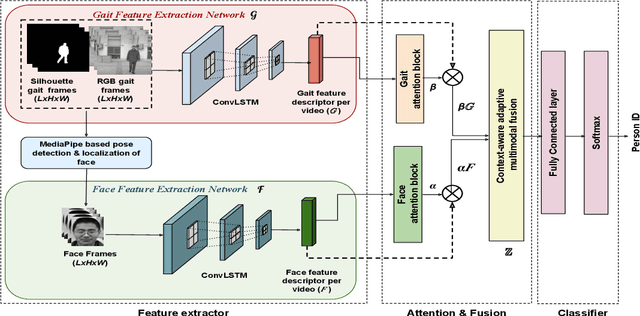
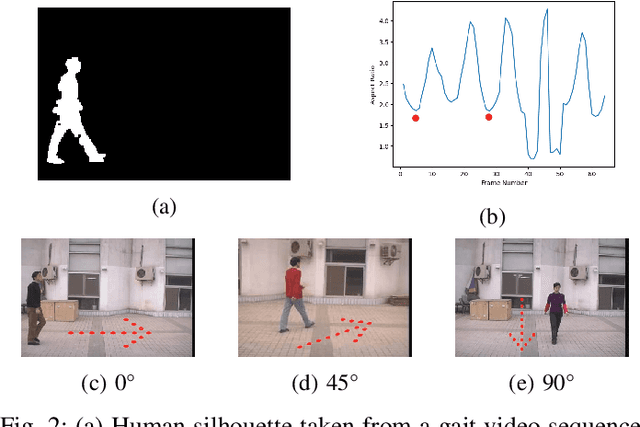

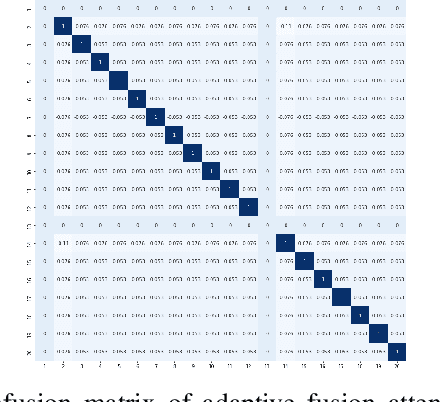
Abstract:Biometrics plays a significant role in vision-based surveillance applications. Soft biometrics such as gait is widely used with face in surveillance tasks like person recognition and re-identification. Nevertheless, in practical scenarios, classical fusion techniques respond poorly to changes in individual users and in the external environment. To this end, we propose a novel adaptive multi-biometric fusion strategy for the dynamic incorporation of gait and face biometric cues by leveraging keyless attention deep neural networks. Various external factors such as viewpoint and distance to the camera, are investigated in this study. Extensive experiments have shown superior performanceof the proposed model compared with the state-of-the-art model.
3DSGrasp: 3D Shape-Completion for Robotic Grasp
Jan 02, 2023



Abstract:Real-world robotic grasping can be done robustly if a complete 3D Point Cloud Data (PCD) of an object is available. However, in practice, PCDs are often incomplete when objects are viewed from few and sparse viewpoints before the grasping action, leading to the generation of wrong or inaccurate grasp poses. We propose a novel grasping strategy, named 3DSGrasp, that predicts the missing geometry from the partial PCD to produce reliable grasp poses. Our proposed PCD completion network is a Transformer-based encoder-decoder network with an Offset-Attention layer. Our network is inherently invariant to the object pose and point's permutation, which generates PCDs that are geometrically consistent and completed properly. Experiments on a wide range of partial PCD show that 3DSGrasp outperforms the best state-of-the-art method on PCD completion tasks and largely improves the grasping success rate in real-world scenarios. The code and dataset will be made available upon acceptance.
 Add to Chrome
Add to Chrome Add to Firefox
Add to Firefox Add to Edge
Add to Edge